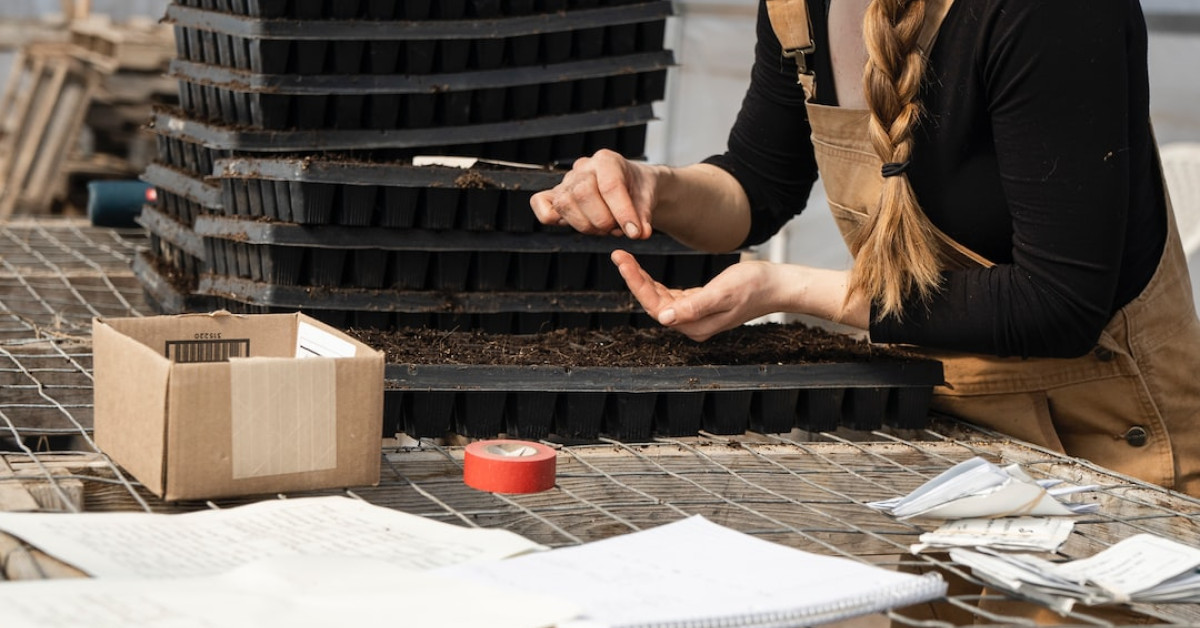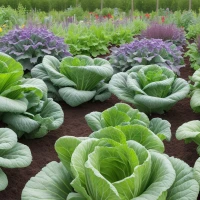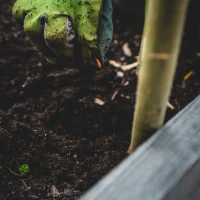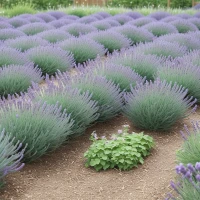Cabbage is a staple in many gardens around the world, cherished for its versatility and nutritional value. Enthusiastic gardeners are always on the prowl for innovative methods to improve yield, enhance flavor, and ward off pests naturally. Enter companion planting – a time-honored strategy that pairs cabbage with suitable plant partners for a flourishing and productive garden. Understanding the intricacies of companion planting for cabbage can truly transform your home garden into a bastion of bounty.
The concept of companion planting hinges on the symbiotic relationships between different plant species – an arrangement that’s demonstrated remarkable benefits in vegetable gardens. From promoting healthier growth to providing natural pest control and improving flavor, incorporating companion plants around your cabbage can make a significant difference.
In this comprehensive guide, we will delve into the art of companion planting for cabbage. Our goal is not just to enlighten you on the best cabbage companions but also to help you harness these partnerships to grow a vegetable garden that’s not only thriving but also a wonder to behold.
The Science Behind Companion Planting
Companion planting is more than an old gardeners’ tale; it’s a practice grounded in ecological science. By planting certain plants in proximity, gardeners can exploit natural relationships and synergies that have evolved over eons.
Benefits of Companion Planting for Cabbage
- Natural Pest Deterrents: Certain plants emit scents or possess properties that can repel cabbage pests.
- Improved Pollination: Companion flowers can attract pollinators to increase cabbage seed production for future plantings.
- Soil Health: Leguminous companions help fix nitrogen in the soil, providing essential nutrients to cabbage.
- Spatial Efficiency: Companion planting maximizes space, allowing for a variety of crops within the same plot.
By incorporating these principles into your garden design, you can create a more dynamic and interdependent garden ecosystem.
Choosing the Best Companions for Your Cabbage
When selecting companion plants, it’s important to consider which species will provide the most benefit to cabbage plants. Ideal companions should complement the cabbage by deterring pests, enhancing growth, and not competing too aggressively for resources.
Alliums: Aromatic Allies
The allium family, including onions, garlic, leeks, and chives, is renowned for its pest-repellent properties. Their pungent odors are believed to mask the scent of cabbage from pests like the cabbage worm and aphids.
Benefits of Alliums:
- Deter cabbage pests with their strong scent.
- Require similar growing conditions, making them great co-planting candidates.
Legumes: Nitrogen Fixers
Legumes, such as peas and beans, are valuable companions for cabbage. They fix atmospheric nitrogen, enriching the soil and providing a nutrient boost that cabbage plants thrive on.
Benefits of Legumes:
- Enhance soil fertility and structure.
- Help to support a healthy cabbage crop.
Herbs: Multifunctional Protectors
A variety of herbs, including dill, mint, sage, and thyme, can be planted alongside cabbage. These herbs not only repel pests but also attract beneficial insects.
Advantages of Planting Herbs:
- Dill attracts beneficial wasps that prey on pest caterpillars.
- Mint can keep away cabbage moths with its strong scent.
- Sage and thyme are known to deter cabbage worms and other pests.
Navigating the Do’s and Don’ts of Cabbage Companion Planting
While some plants positively impact cabbage growth, others can have detrimental effects. It’s imperative to be aware of what not to plant near cabbage to avoid competition, disease, and pest attraction.
The Don’ts of Cabbage Companion Planting
- Strawberries: These fruits can attract slugs, which also enjoy feasting on cabbage leaves.
- Grapes: The vine growth can impede cabbage development and they share common pests.
- Tomatoes: Their growth can be stunted when planted near cabbage, due to shared diseases.
Companion Planting Strategies:
- Spatial Arrangement: Plant cabbage amongst other vegetables and herbs in a pattern that maximizes space and sun exposure.
- Rotation: Rotate your cabbage and companion plants to prevent disease and pest build-up in the soil.
- Interplanting: Grow rows of companion plants in between rows of cabbage to provide natural pest control.
Companion Plants to Avoid for Cabbage
Knowing which plants to avoid is just as important as knowing which plants to select. Using companion planting effectively means steering clear of species that could introduce disease, attract pests, or compete too heavily with cabbage for resources.
Nightshades and Brassicas: A Conflict of Interest
Nightshade plants, such as tomatoes, peppers, and eggplants, should be planted away from cabbage. These plants can suffer from similar diseases and pests, which can easily spread if they are too close.
Negative Impacts of Nightshades:
- Disease transmission between similar species.
- Competition for nutrients which can harm cabbage growth.
Creating Your Cabbage Companion Planting Map
Planning your garden layout with companion planting in principle is key to a successful harvest. A well-thought-out garden map ensures proper spacing, timing, and positioning for cabbage and its companions.
Steps for Mapping Your Garden:
- Identify companion plants that suit your climate and soil conditions.
- Draw a rough sketch of your garden space, marking where each type of plant will go.
- Ensure there is enough space between plants to avoid competition for nutrients and sunlight.
- Consider the height and spread of each plant to prevent shading of smaller companions.
Companion Planting: Beyond the Cabbage Patch
Although we’ve focused on cabbage in this guide, companion planting principles can be applied throughout your vegetable garden. By diversifying your crops and understanding the relationships between different plants, you can create a resilient and abundant garden ecosystem.
Implementing Companion Planting in Other Garden Areas
- Root Vegetables: Carrots and radishes benefit from being planted with leafy greens, which provide shade and conserve moisture.
- Squash: Planting marigolds or nasturtiums with squash can deter squash bugs and beetles.
Final Thoughts on Companion Planting for Cabbage
Embracing the practice of companion planting for cabbage can lead to a healthier, more sustainable garden space. The right combination of plants can reduce your reliance on chemical pesticides, improve your soil health, and potentially yield a more bountiful harvest.
Remember, the main goal of companion planting is to create a harmonious environment where each plant supports the growth of others. Through careful planning and observation, you can perfect your cabbage companion planting and enjoy the fruits (and vegetables!) of your labor.
Happy gardening!










